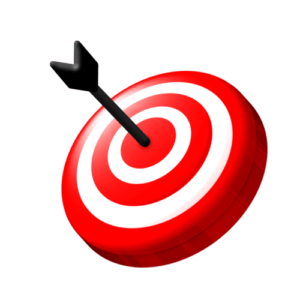
Tardive Dyskinesia Test
Answer these simple questions to understand more about your Tardive Dyskinesia. We share instant results and keep your information confidential.

What is Tardive Dyskinesia Test?
Tardive Dyskinesia (TD) is a neurological disorder characterized by involuntary and repetitive movements, often caused by long-term use of certain medications, such as antipsychotic drugs. To diagnose TD, a healthcare provider conducts a clinical assessment that includes observing the patient’s movements and inquiring about their medical history and medication usage. There is no specific laboratory test for TD, but various rating scales and criteria, such as the Abnormal Involuntary Movement Scale (AIMS), are employed to assess the severity of symptoms. Early detection and monitoring are crucial to manage TD and adjust treatment accordingly.
Who can benefit from this Tardive Dyskinesia Test?
The Tardive Dyskinesia Test can benefit individuals who are at risk or exhibit symptoms of tardive dyskinesia (TD), a neurological disorder often associated with prolonged use of certain medications, particularly antipsychotic drugs. This test is valuable for psychiatric patients, as these medications are commonly prescribed to manage conditions like schizophrenia and bipolar disorder. Additionally, elderly individuals taking medications for various medical conditions may also benefit, as TD can develop as a side effect. Early detection through this test can lead to timely intervention and treatment, improving the quality of life for affected individuals.


Tardive Dyskinesia Test Accuracy
The accuracy of tests for Tardive Dyskinesia (TD) can vary. Clinical diagnosis relies on observing characteristic involuntary movements. While there isn’t a single definitive test, diagnostic accuracy improves with experienced clinicians. Some rating scales like AIMS (Abnormal Involuntary Movement Scale) can aid in assessment. Biomarker research and advanced imaging techniques may enhance accuracy in the future. Overall, accurate diagnosis of TD depends on the clinician’s expertise and thorough evaluation of the patient’s history and symptoms.
Types of Assessment to Measure Tardive Dyskinesia Test
Abnormal Involuntary Movement Scale (AIMS):
The AIMS is one of the most widely used tools for assessing tardive dyskinesia. It involves a clinician observing and rating the severity of abnormal involuntary movements in different body regions, including the face, trunk, upper extremities, and lower extremities.
Simpson-Angus Scale:
While primarily used to assess parkinsonism symptoms, the Simpson-Angus Scale can also be used to evaluate tardive dyskinesia. It assesses parkinsonism-related signs, such as rigidity and bradykinesia, which may co-occur with tardive dyskinesia in some cases.
Clinical Global Impression (CGI) Scale:
The CGI scale is a clinician-rated tool that assesses the overall severity of tardive dyskinesia based on the clinician’s clinical judgment. It takes into account both the objective symptoms and the patient’s subjective experience.
Video Recordings:
Video recordings of the patient’s movements can be a valuable tool for assessing tardive dyskinesia. These recordings provide a visual record of the abnormal movements, allowing clinicians to review and rate the severity of dyskinesia over time.
Neuroimaging:
In some cases, neuroimaging techniques like MRI or PET scans may be used to assess the structural and functional changes in the brain associated with tardive dyskinesia. While not a direct measure of movement symptoms, neuroimaging can provide valuable insights into the underlying neurological mechanisms.
Laboratory Tests:
Laboratory tests may be conducted to rule out other potential causes of movement disorders or to assess specific biomarkers associated with tardive dyskinesia.
Handling Tardive Dyskinesia Test
Tardive dyskinesia is a neurological disorder characterized by involuntary and repetitive movements, such as grimacing, tongue protrusion, lip smacking, and rapid blinking. These movements are often associated with the long-term use of certain medications, especially antipsychotic drugs used to treat conditions like schizophrenia and bipolar disorder.
Here are some steps typically taken in handling and diagnosing tardive dyskinesia:
- Symptom Recognition: The first step is recognizing the symptoms of TD. If you or someone you know is experiencing unusual and involuntary movements, it’s essential to seek medical attention.
- Medical Evaluation: A healthcare provider, typically a neurologist or psychiatrist, will conduct a thorough medical evaluation. This may include a review of the patient’s medical history, medications, and a physical examination.
- Diagnosis: TD is diagnosed based on the presence of characteristic involuntary movements and a history of long-term use of certain medications, particularly antipsychotics. The healthcare provider will assess the severity of the symptoms and may use standardized rating scales to help with diagnosis.
- Medication Review: If TD is suspected, the healthcare provider will review the patient’s current medications. In some cases, they may consider reducing or discontinuing the medication responsible for TD if it’s safe and feasible. However, this decision should be carefully weighed, as discontinuing necessary medications can have other consequences.
- Treatment Options: Treatment for TD may involve addressing the symptoms and attempting to manage them. Medications such as tetrabenazine, valbenazine, or deutetrabenazine may be considered for controlling TD symptoms. Non-medication approaches like behavioral therapy and physical therapy may also be helpful in managing symptoms.
- Regular Monitoring: If a patient is diagnosed with TD, regular monitoring and follow-up appointments with the healthcare provider are essential to track the progression of symptoms and adjust treatment as needed.
- Lifestyle Adjustments: Patients and their healthcare providers may discuss lifestyle adjustments to help manage TD symptoms, such as avoiding triggers like stress and caffeine.
It’s important to remember that the treatment and management of TD should be individualized based on the patient’s specific needs and circumstances. Always consult with a healthcare professional for proper evaluation, diagnosis, and guidance on how to handle tardive dyskinesia.